|
The requested video is no longer available.
As remarkable as Greater Yellowstone and Yellowstone National Park are during the rest of the year, in winter the park is a magical place: steam and boiling water erupt from natural cauldrons in the park’s ice-covered surface, snow-dusted bison exhale vaporous breaths as they lumber through drifts of white, foxes and coyotes paw and pounce in their search for prey in the deep snow, and gray wolves bay beneath the frozen moon. Yellowstone in winter also is a place of vulnerability. Wildlife endure extremes of cold, wind, and the absence of ready food. Their tracks through deep snow tell of tenacious struggles through the long winter. Park conditions in this most severe of seasons become critical to the mortality of wildlife and even to survival of park species. No wonder the park is so popular in this magical, vulnerable season with those who have enjoyed its charms. It is often said among park staff who live in Yellowstone that winter is their favorite season. Many park visitors who try a winter trip to Yellowstone come back for more. 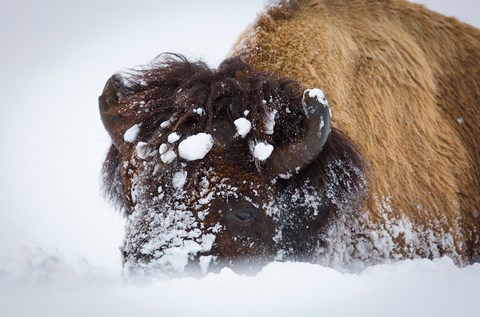
NPS/Neal Herbert Animal AdaptationsDeep snow, cold temperatures, and short days characterize winter in the Greater Yellowstone Ecosystem. Resident plants and animals are adapted to these conditions. For example, conifers retain their needles through the winter, which extends their ability to photosynthesize. Aspens and cottonwoods contain chlorophyll in their bark, enabling them to photosynthesize before they produce leaves. Behavioral
Morphological and Physical
Biochemical and Physiological
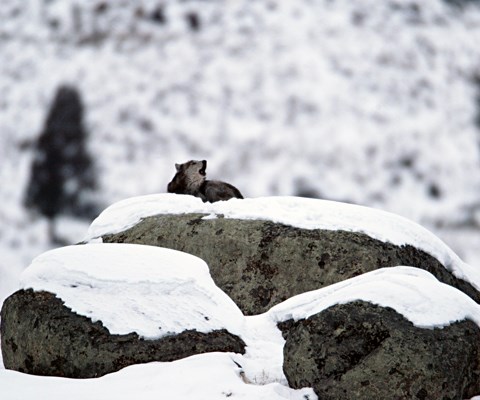
NPS/Jim Peaco Winter SoundscapesGreater Yellowstone’s soundscape is the aggregate of all the sounds within the park, including those inaudible to the human ear. Some sounds are critical for animals to locate a mate or food, or to avoid predators. Other sounds, such as those produced by weather, water, and geothermal activity, may be a consequence rather than a driver of ecological processes. Human-caused sounds can mask the natural soundscape. The National Park Service’s goal is to protect or restore natural soundscapes where possible and minimize human-caused sounds while recognizing that they are generally more appropriate in and near developed areas. The quality of Greater Yellowstone’s soundscape therefore depends on where and how often non-natural sounds are present as well as their levels. Human-caused sounds that mask the natural soundscape relied upon by wildlife and enjoyed by park visitors are, to some extent, unavoidable in and near developed areas. However, the potential for frequent and pervasive high-decibel noise from oversnow vehicles has made the winter soundscape an issue of particular concern in Yellowstone. Management of the park’s winter soundscape is important because oversnow vehicles are allowed on roads in much of the park. 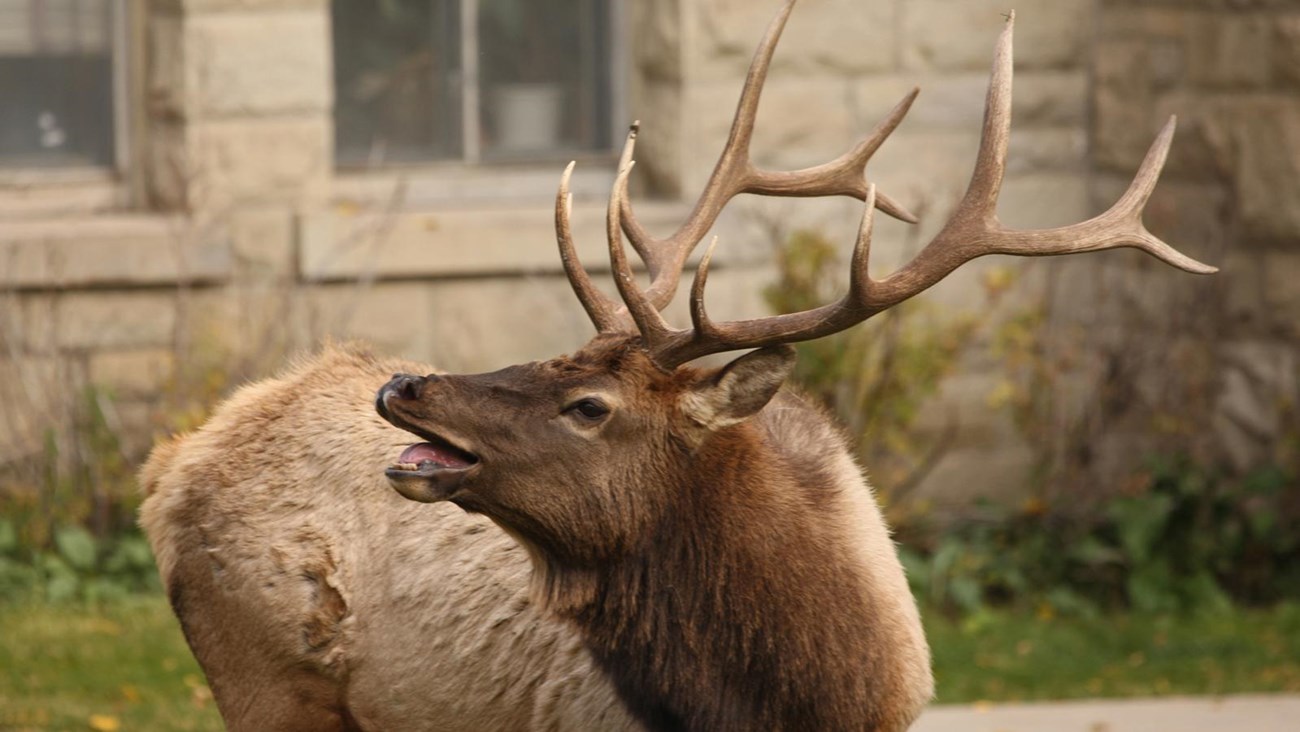
Soundscapes
The Greater Yellowstone Ecosystem has many sounds with important ecological functions for reproduction and survival. They form a soundscape. Frequently Asked QuestionsYes, though not all roads are open to cars. You can drive into the park through the North Entrance year-round. The winter season of services, tours, activities, and ranger programs typically spans from mid-December to mid-March. At Mammoth, you can take self-guiding tours of Fort Yellowstone and the Mammoth Terraces, join a guided walk or tour, cross-country ski, snowshoe, ice skate (sometimes), rent a hot tub, watch wildlife, attend ranger programs, and visit the Albright Visitor Center. You can also arrange for oversnow tours to Norris Geyser Basin, Old Faithful, and the Grand Canyon of the Yellowstone River. From Mammoth, you can drive past Blacktail Plateau, through Lamar Valley, and on to Cooke City, Montana. You may see coyotes, bison, elk, wolves, eagles, and other wildlife along the way. You can also stop to cross-country ski or snowshoe a number of trails along this road. The interior of the park is open to various oversnow vehicles. Tours can be arranged through the park concessioner or operators at the various gates. The interior of the park is open to various oversnow vehicles. Tours can be arranged through the park concessioner or operators at the various gates. You can also stay at Old Faithful Snow Lodge, from which you can walk, snowshoe, or ski around the geyser basin, take shuttles to cross-country ski trails, or join a tour to other parts of the park such as West Thumb, Hayden Valley, and the Grand Canyon of the Yellowstone River. Average winter highs are 20–30ºF (–6 to –1ºC); average lows are 0–9ºF (–17 to –13ºC). The record low was –66°F (–54°C) at Riverside Ranger Station, near the West Entrance, on February 9, 1933.
Source: NPS DataStore Collection 7835. To search for additional information, visit the NPS DataStore. 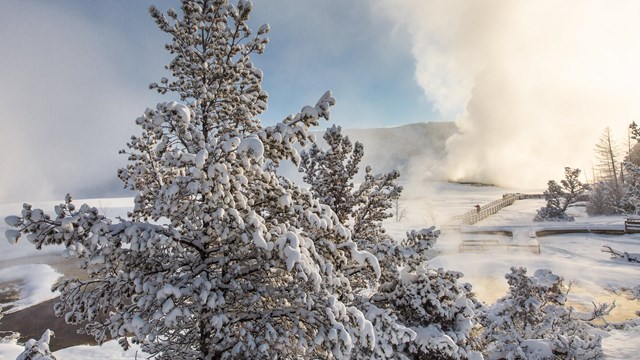
Explore in Winter
Ready to brave the cold? Check out this information for planning a winter visit. 
Skiing & Snowshoeing
Make tracks in a winter wonderland. 
Winter Use
The winter use debate spans more than 80 years, with each participant asking: should the park be accessible in winter? 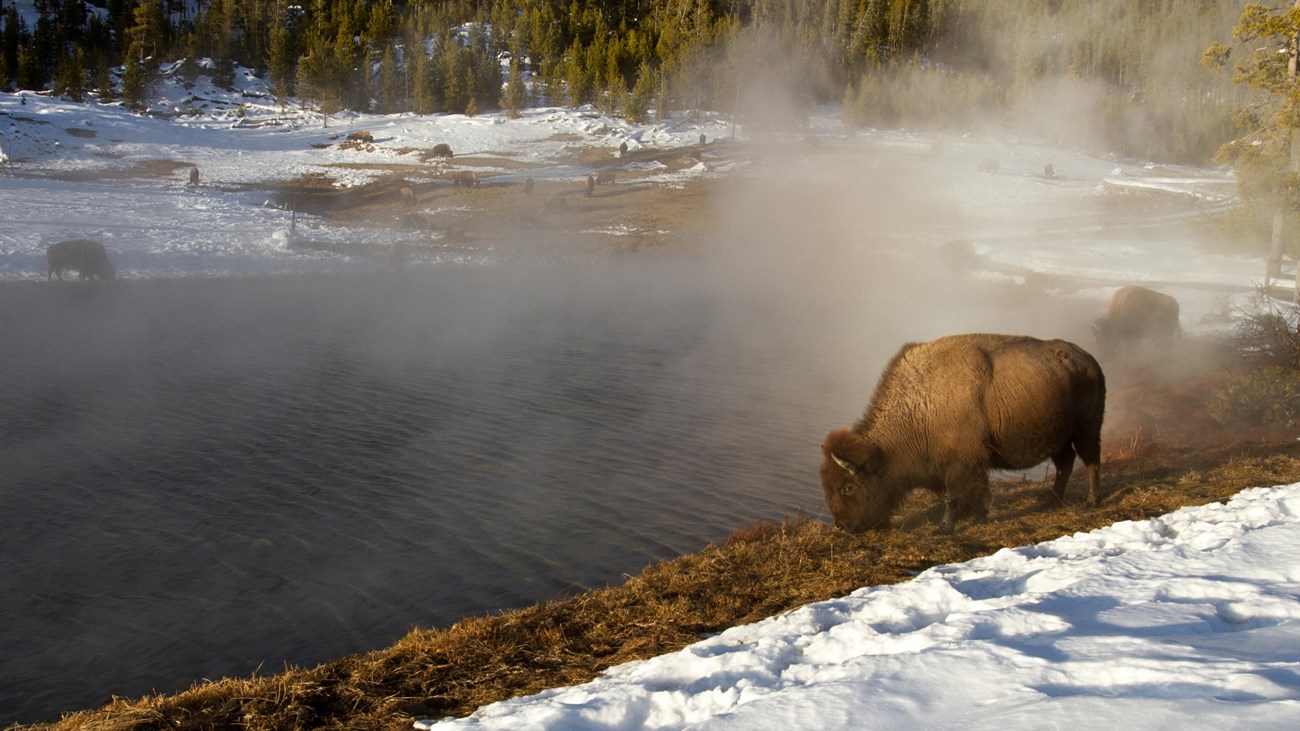
Greater Yellowstone Ecosystem
Yellowstone is the heart of one of the largest, nearly intact temperate-zones on Earth. |
Last updated: June 2, 2025
